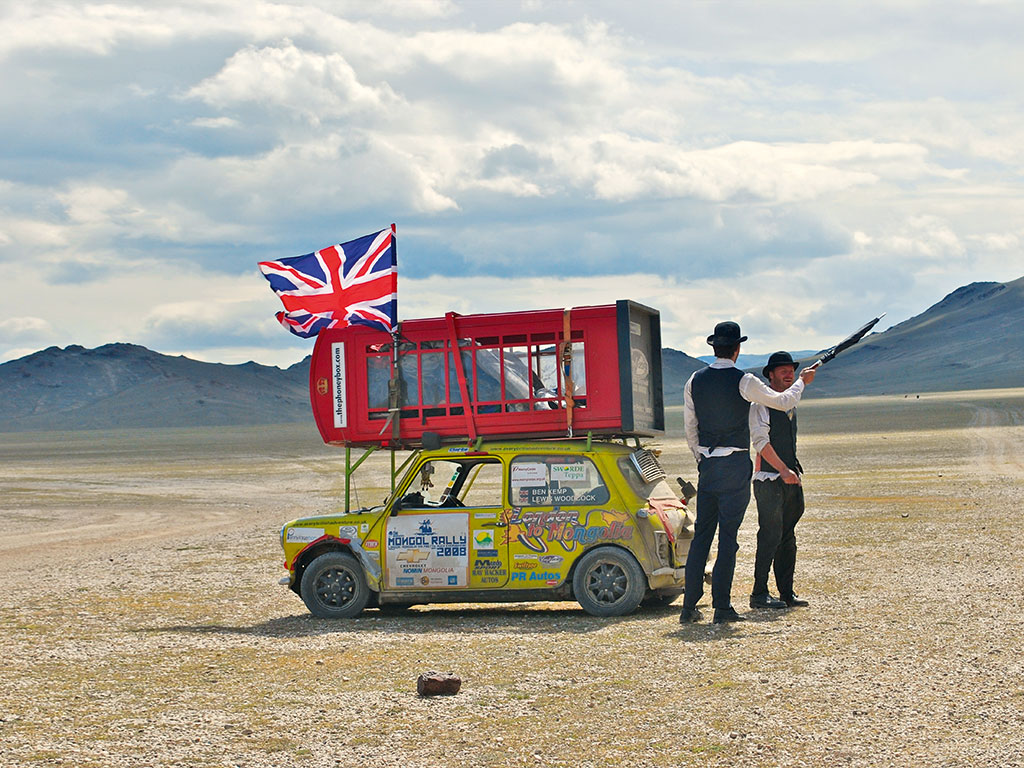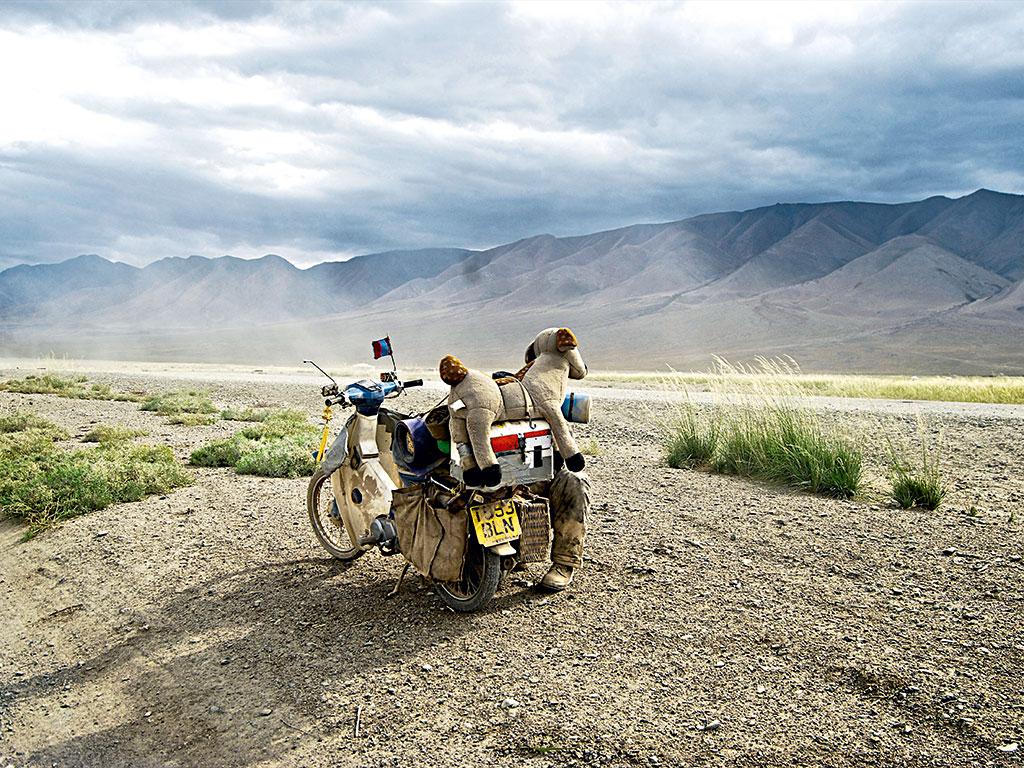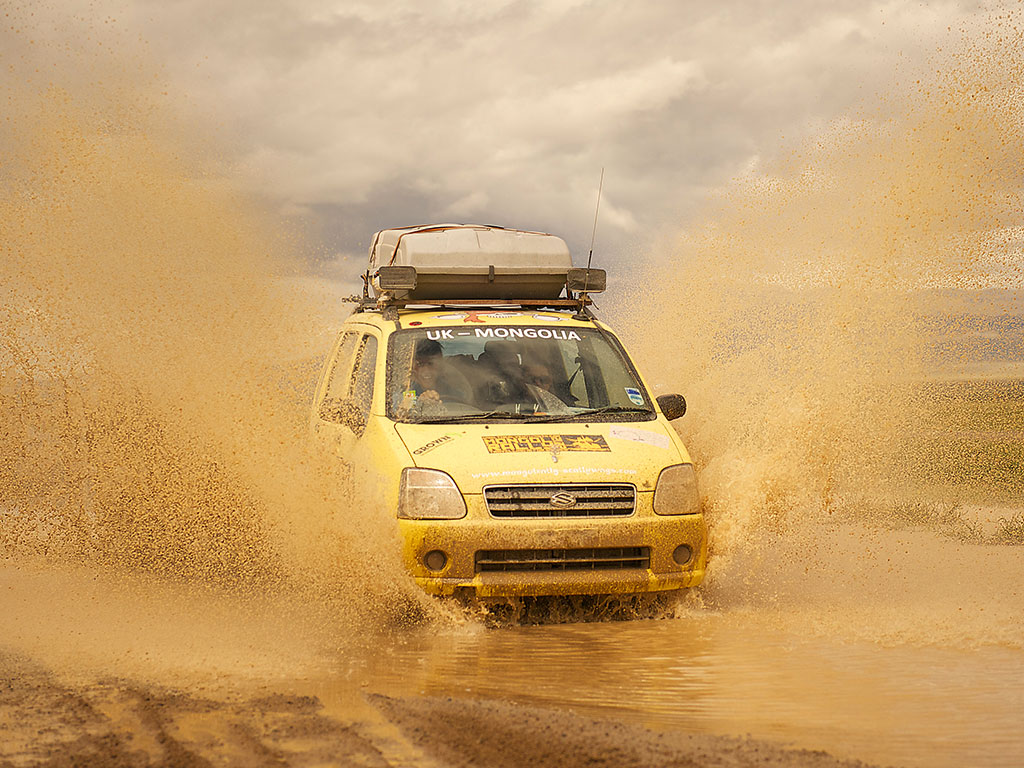
For those of a certain disposition, adventure is the perfect way to spend a holiday. Away from the monotony of the office, more and more people are taking up daring challenges that send them to far-flung parts across the world. Road trips that cross continents have become increasingly popular, as they allow participants to drive across exotic parts of the world they would otherwise be unlikely to visit.
While some of the more well-known rallies are made up of high-end sports cars hurtling across well-maintained roads, a few exist that are designed to make things as uncomfortable and tricky as possible. The most notorious is the Mongol Rally, an almost six week excursion from the UK to Mongolia, across some of the most remarkable and difficult terrain imaginable.
The idea behind the Mongol Rally arrived to Tom Morgan in 2001 when he decided, somewhat rashly, to drive with a friend from the UK to Mongolia. This initial trip failed, but Morgan was inspired to begin developing an idea for a proper rally. He told Wanderlust Travel Magazine his reason for launching the rally: “I had a lot of spare time and tried to think of the most stupid place I could drive to… I started developing the rally as an event, thinking it was something I could do in my spare time. The first official rally was held in 2004, with four teams, and it’s kind of grown from there.”

Alternative experience
Most people at some stage in their life get an urge to explore the world and usually end up strapping on a backpack and heading to already well-tread destinations. However, Morgan believes there is a desire among some to try something completely different, and he says the rally provides a thrilling alternative to the traditional backpacking trips that many young adults take: “Most people’s idea of independent travel is backpacking. But we set them a challenge. They could just wander the world for six months aimlessly or take on the challenge of driving a highly inappropriate vehicle to Mongolia.
“A lot of people backpacking, all they do is religiously follow the Lonely Planet guides. Their day-to-day activity is staying in hotels and eating in restaurants. OK, they might be cheap hotels and cheap restaurants but it’s just not interesting.”
This year’s Mongol Rally begins in mid-July, and finishes, for those that make it all the way, between four and six weeks later. The entry fee for the 2013 adventure is £980. Originally free, the price has steadily gone up each year as interest has increased. Whereas the first rally in 2004 had just six teams – four of which finished – over 250 now take part each year. The costs tend to be around £2,000 per person, taking into consideration things like food, accommodation and the almost inevitable repairs.

Rules and route
Although there aren’t many rules, the organisers of the rally have laid out some requirements for those wishing to take part. They describe the rally as “an adventure, not a holiday”, and so participants must make things challenging, such as by using small cars unsuitable for getting across tricky terrain. Engines must not be more powerful than 1200cc, and the vehicles must not be more than ten years old.
They are also clear that those taking part are very much responsible for themselves, and so they provide no backup or support vehicles, with a note on the website stating: “We don’t make any safety arrangements. Our adventures are designed to be just that, so organising a support crew would rather take the edge off things. People are made painfully aware that what they’re entering into can be extremely dangerous,” before adding, worryingly, “We can’t guarantee your arrival at the finish line, or your safety.”
Obviously, travelling to somewhere as remote as Mongolia means you’re going to pass through some pretty remarkable places on the way. There is no firm route that drivers need to take, so they are free to explore whatever remote lands they wish. The race starts from Goodwood Circuit in the UK and finishes at the Mongolian capital of Ulan Bator. There are other starting points across Europe for teams based outside of the UK.
They also arrange ‘the Festival of Slow’ at Goodwood and then the ‘Czechout’ party in a medieval castle in Prague, which act as launch parties and a place for drivers to congregate, meet up and swap stories while en route. From Prague, teams then take a number of different routes towards Mongolia – usually via Moscow, Kiev or Istanbul, but some have chosen to go up to the Arctic Circle or down through Iran and Afghanistan. ª
The organisers do list a few destinations they deem worth investigating on the trip. These include: Germany’s Nurburgring, the public toll road that is the home of the German Formula 1 Grand Prix; Romania’s Transfagarian Highway; Chernobyl in the Ukraine; and the remote Turkish region of Cappadocia, where balloon rides can be taken to observe the stunning landscape below. Other suggestions include the village of Derweze in Turkmenistan, where a burning crater dubbed ‘The Door to Hell’ by locals sits after a cavern filled with gas collapsed in 1971 and has been burning ever since.
There is also: the Baikonur Cosmodrome in Kazakhstan, where the Russian Federal Space Agency runs its operations; the Aral Sea fishing boat graveyard, where ships are marooned far back on the shore after the decline in size of the lake; and the breathtaking Altai Mountains, which act as the meeting point of China, Russia, Kazakhstan and Mongolia.
Saving the world
Initially run as a charity, Morgan’s company –the League of Adventurists – has run the event privately since 2007, although the vast majority of participants raise a considerable amount for charity through sponsorship. Indeed, each team must raise at least £1,000 for a charity, with at least half going to the organisation’s chosen charity for that year. Recently, the organisers have begun to focus their charitable ambitions towards preserving the world’s rainforests by working together with the Cool Earth charity. Since the event’s launch in 2004, over £4.5m has been raised, and the largest amount raised by a team was in 2009, when Team Butch Cassidy raised £56,000 – although last year’s event is expected to have seen more than that raised by individual teams.
While the emphasis has been on vehicles being the most unsuitable and ridiculous for such a long-distance, perilous journey, the Mongolian authorities stipulated in 2009 that all vehicles must be less than ten years old. One of the unique aspects of the rally is that the vehicles are all donated to local communities once the trip is completed. As a result, participants are encouraged to use vehicles that would be useful to struggling communities, such as ambulances and fire engines.
Bring me the horizon
The organisers behind the event are keen to expand into different types of adventures, and have already organised even crazier rallies in other parts of the world. There is the Rickshaw Run, a 3,500km adventure across India in one of the country’s terrifyingly fragile motorised taxis. They have also organised the Mongol Derby, which they describe as “the longest, toughest horse race in the world”, stretching 1,000km across the Mongolian steppe. The Mototaxi Junket travels across the Peruvian Andes to the Amazon basin, while the Ice Run sees motorcyclists brave 1,500km of the frozen Siberian wilderness.
Such adventures appeal to people looking for out-of-the-ordinary challenges and something very, very different to the usual travelling holiday. A once in a lifetime experience awaits anyone brave enough to take the challenge.
Thanks to Tom Archer for the photography.

